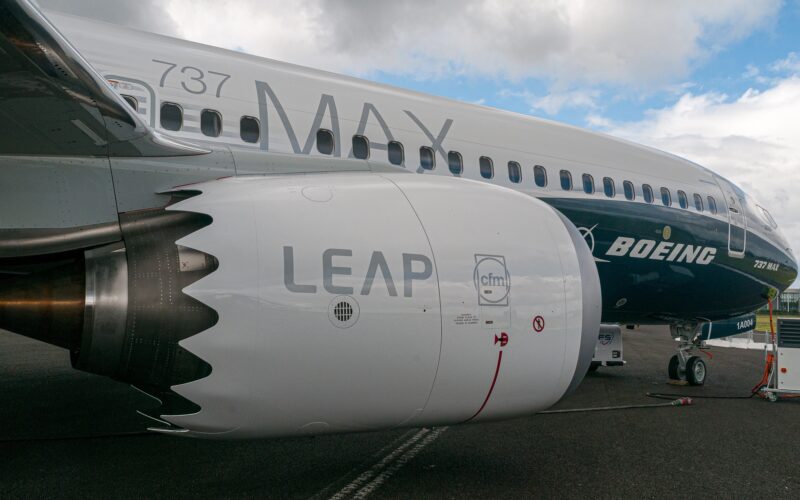The United States (US) Federal Aviation Administration (FAA) will publish an Airworthiness Directive (AD) to prevent potential failures of the Boeing 737 MAX engine’s inlet when running engine anti-ice (EAI) systems in dry air.
According to the FAA, the AD was prompted by a report from June 2023 that said that using the EAI system in dry air “for more than five minutes during certain environmental and operational conditions can cause overheating of the engine inlet inner barrel beyond the material design limit, resulting in failure of the engine inlet inner barrel and severe engine inlet cowl damage”.
During the incident, which occurred during flight testing and analysis, it was discovered that the usage of the EAI system in dry air for more than five minutes in “certain combinations of altitude, total air temperature, and N1 settings can result in engine inlet cowl temperatures exceeding design limits when not in visible moisture”.
Subsequently, the excessive heat buildup can cause the engine’s inlet inner barrel to overheat beyond the designed limits, resulting in the LEAP-1B’s inlet inner barrel failure and subsequent inlet cowl damage.
As such, the directive will require airlines operating the Boeing 737 MAX equipped with the CFM International LEAP-1B engines to revise their current airplane flight manuals (AFM) to limit the usage of EAI, as well as making changes to the minimum equipment list (MEL) to “prohibit dispatch under a certain item”.
The CFM International LEAP-1B engines are exclusively used to power the Boeing 737 MAX aircraft family, ranging from the 737 MAX-7, MAX-8, MAX-8200, MAX-9, and MAX-10.
Notably, the inlet is not built by CFM International, which manufactures the LEAP-1B engine, but by Boeing itself.
No in-service failures
However, the FAA noted that there have not been any in-service failures associated with the condition.
Still, if it is not addressed, it could result in “departure of the inlet and potential fan cowl failure and departure from the airplane”. Subsequently, the fuselage or the aircraft’s windows could be damaged, “potentially resulting in decompression and hazard to window-seated passengers aft of the wing and/or impact damage to the wing, flight control surfaces, and/or empennage, which could result in loss of control of the airplane”.
Another danger is that after the loss of the inlet, the increased aerodynamic drag and asymmetric lift could result in the added risk of the aircraft running out of fuel, “resulting in a forced off-airport landing and injury to passengers”.
According to the FAA’s estimates, the AD will affect 402 aircraft registered in the US, with the cost of compliance with the directive being $85 per aircraft as it only requires a change in the AFM/MEL. But the regulator noted that the current AD is only interim, with Boeing “currently developing a modification that will address the unsafe condition identified in this AD”.
After the finalization of the modification, the FAA could follow up with additional action.
The FAA will publish the AD on August 10, 2023, with its effective date being 15 days after that date. Stakeholders are welcome to comment on the directive for 45 days after the publication of the AD.
UPDATE August 8, 2023, 8:30 AM (UTC +3): The article was updated to better reflect the FAA AD.

